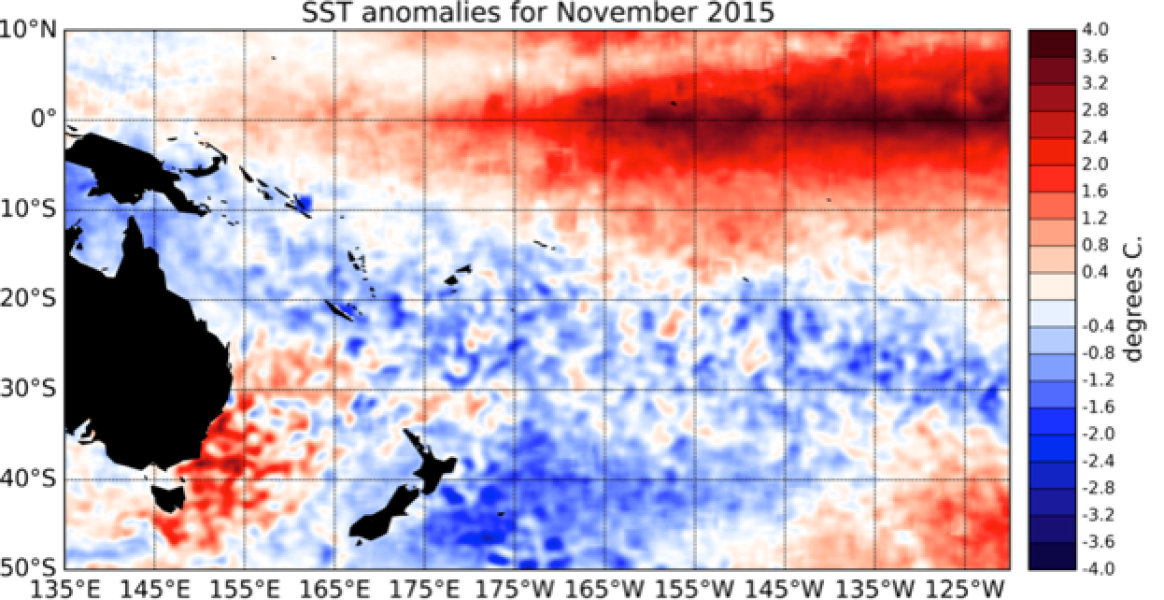Strong El Niño conditions continued in November 2015. The latest monthly sea surface temperature (SST) anomalies exceed +2°C over large areas of the central and eastern Pacific.
Sub-surface ocean temperatures in the eastern Pacific intensified in November 2015, with anomalies currently exceeding +7°C off the South American coast (around 120°W and between about 75 and 120m depth).
The Southern Oscillation Index (SOI) exhibited large intra-seasonal variability in November, with several excursions in the positive, and is currently weakly negative at -0.6 for November as a whole. However large-scale atmospheric patterns continue to indicate that the atmosphere remains well coupled to the oceanic anomalies. Westerly wind anomalies (weaker easterly trade-winds) have continued to dominate the central and western Pacific. Convection and rainfall was much more intense than normal in the central and eastern Pacific, while parts of the Maritime Continent continued to record large rainfall deficits. The South Pacific Convergence Zone (SPCZ) was again this month displaced towards the Equator in the central Pacific and western Pacific. The Inter-Tropical Convergence Zone (ITCZ) was also shifted towards the Equator in the eastern and central Pacific and suppressed in the western Equatorial Pacific. The ENSO Precipitation Index (ESPI) reflects El Niño conditions with a value of +0.89 (value to the 30th of November 2015).
The Madden-Julian Oscillation (MJO) was mostly inactive over the western Pacific during the past two weeks. At the forecast horizon of 14 days, the dynamical and statistical CPC forecasts diverge again this month: the dynamical forecasts indicate very little intra-seasonal convection over the western Pacific, while the statistical forecast indicate a slight increase in intra-seasonal convective activity propagating into the Maritime Continent. International guidance indicates that El Niño conditions are certain (100% chance) to continue over the next three month period (December 2015 – February 2016) and through to the early autumn (March – May 2016).

